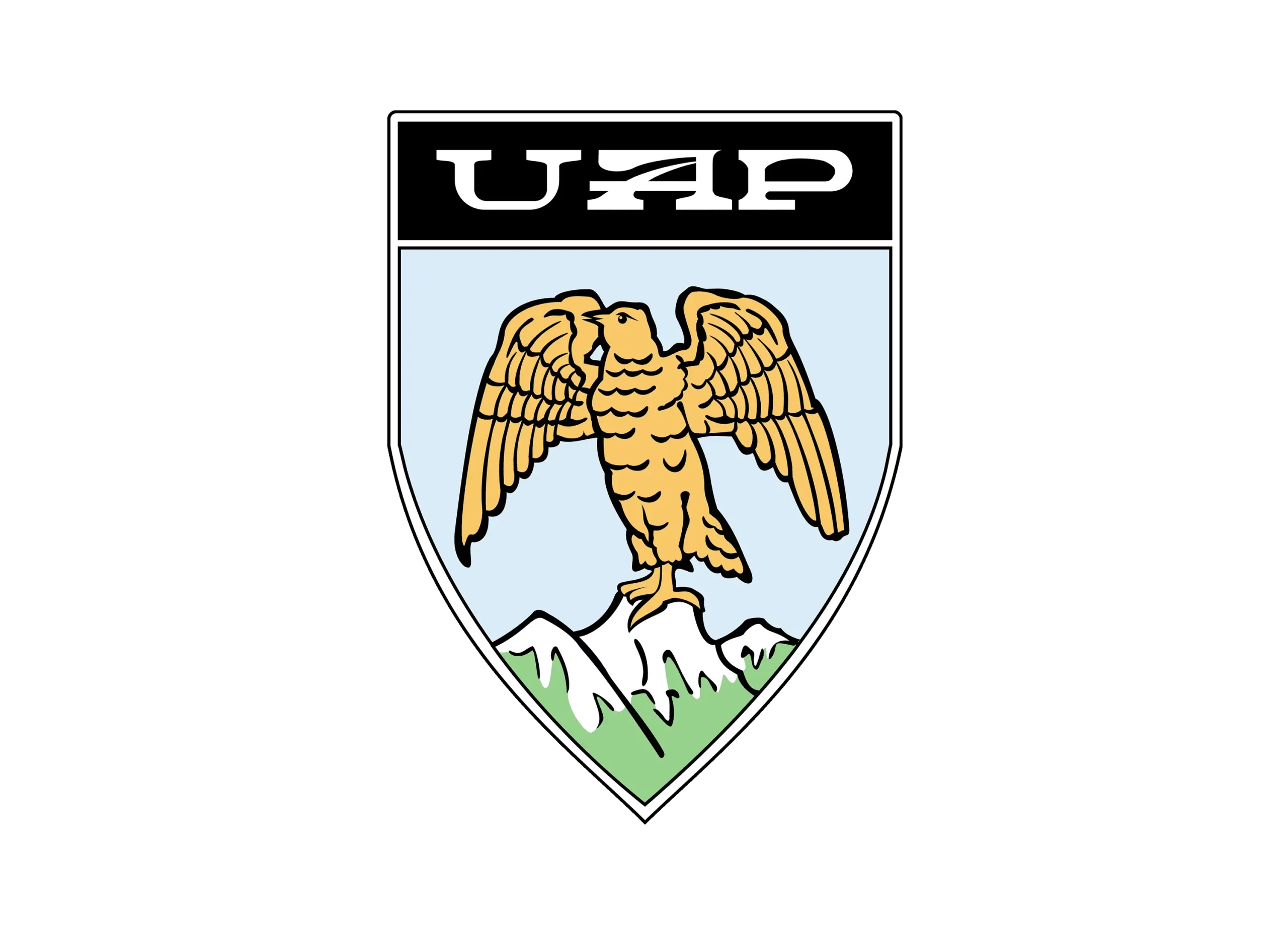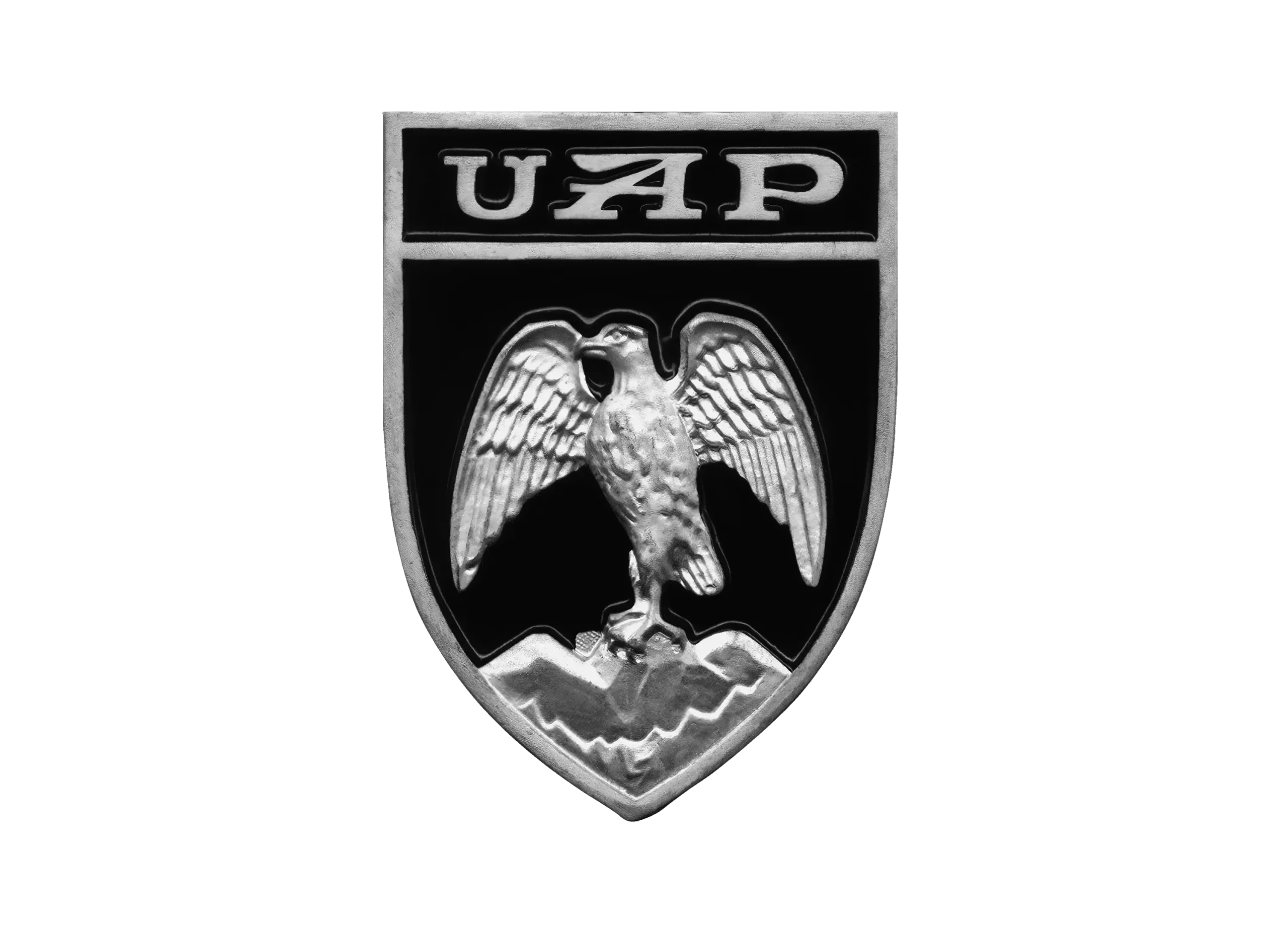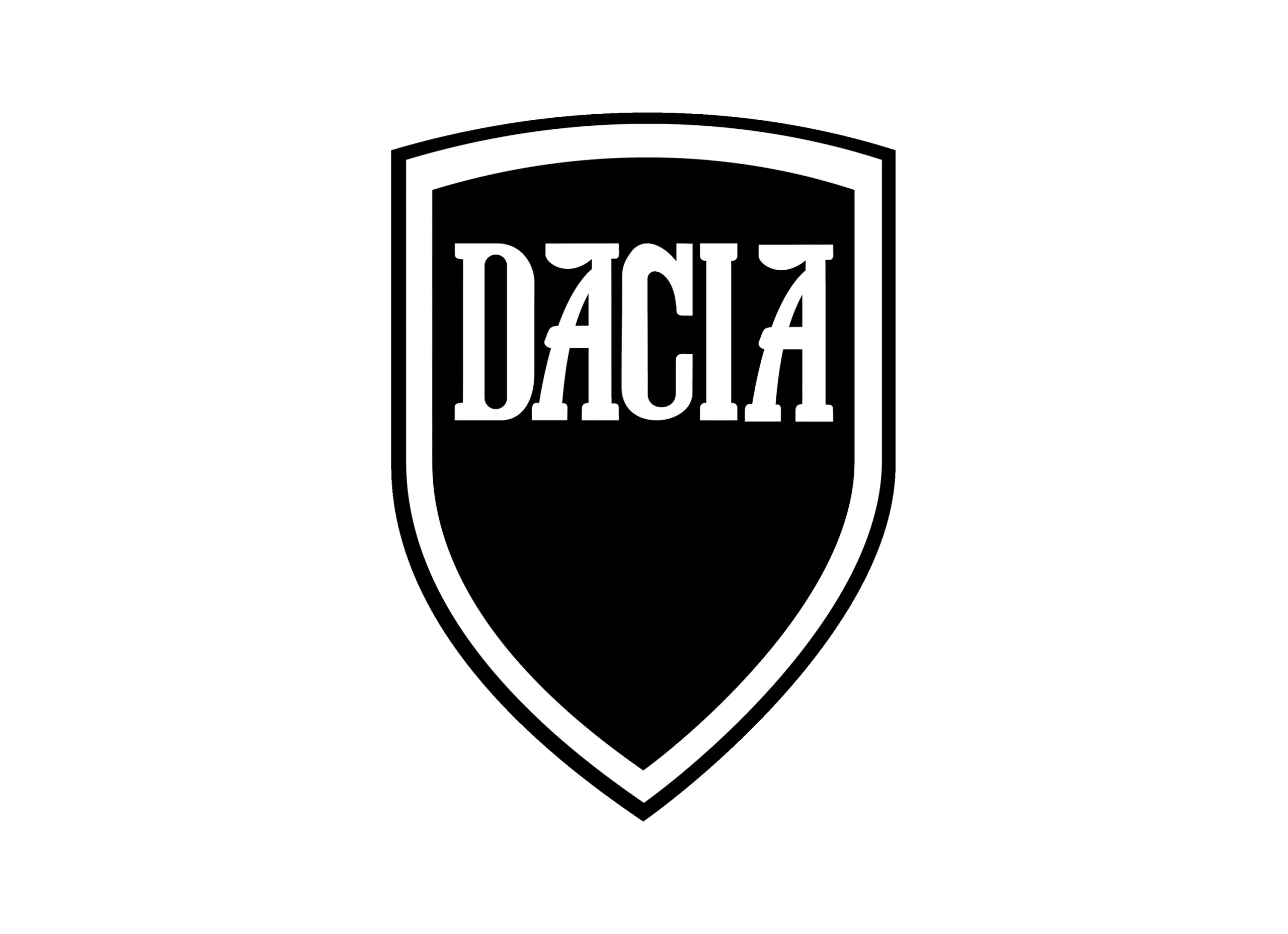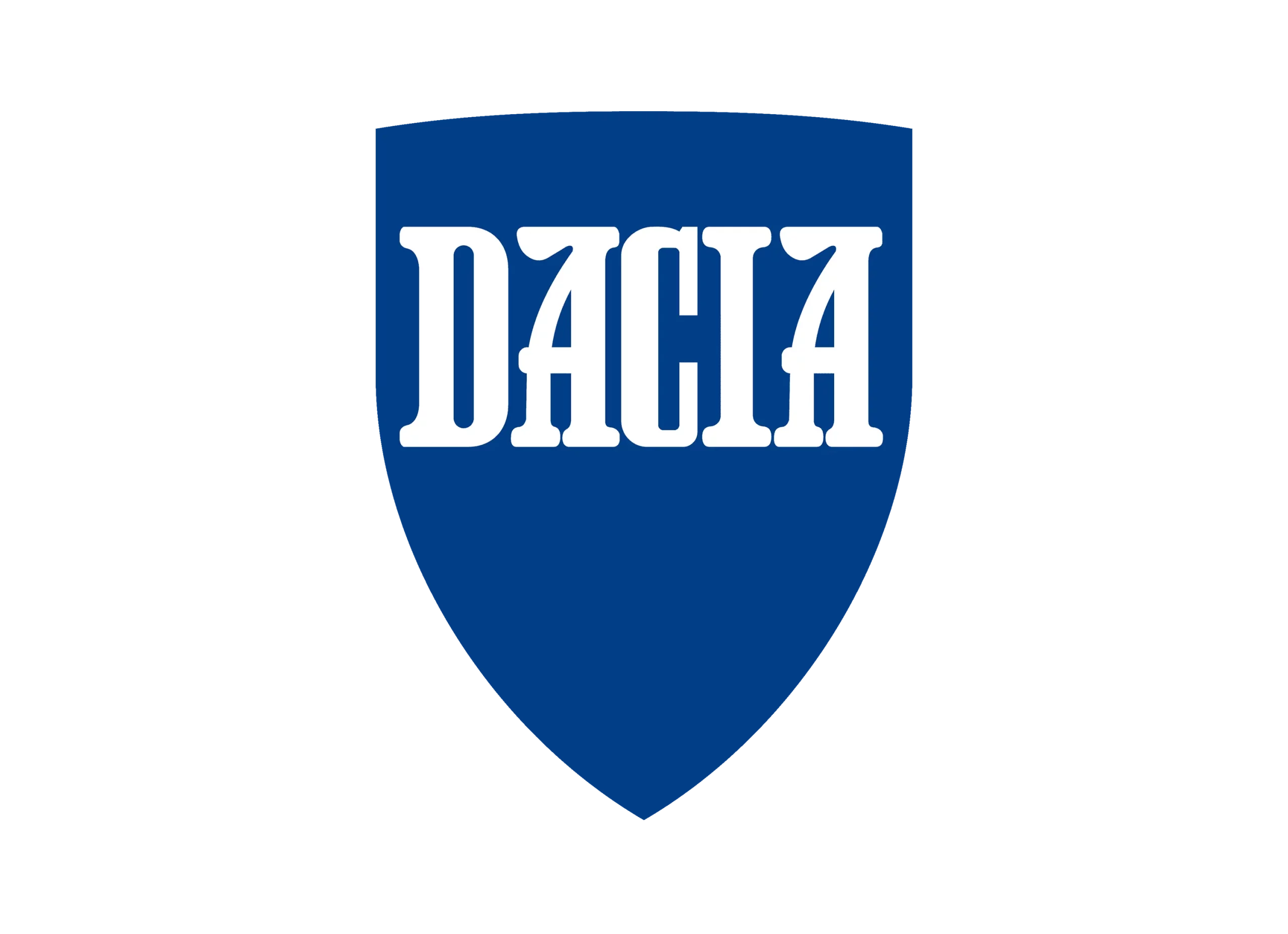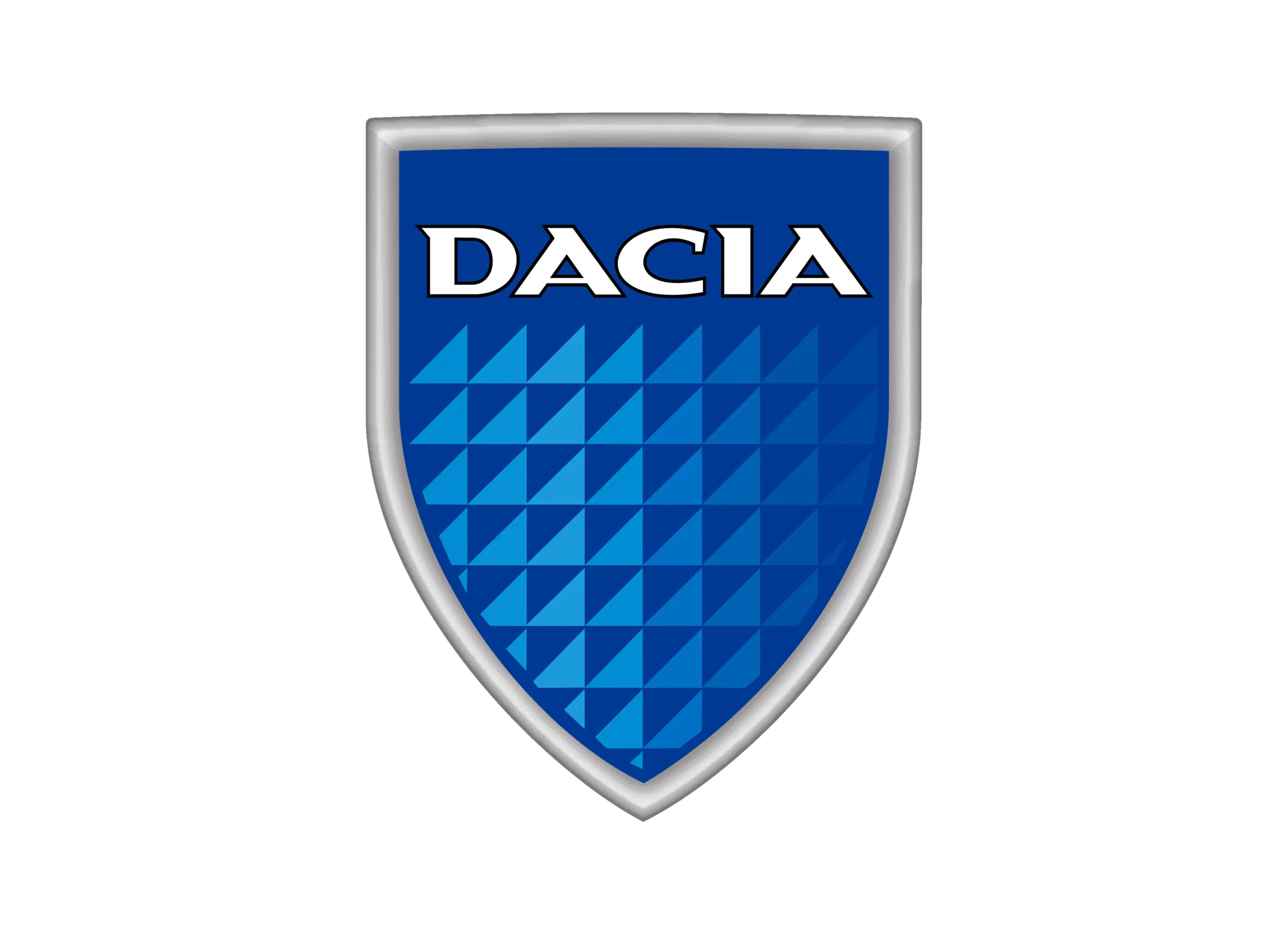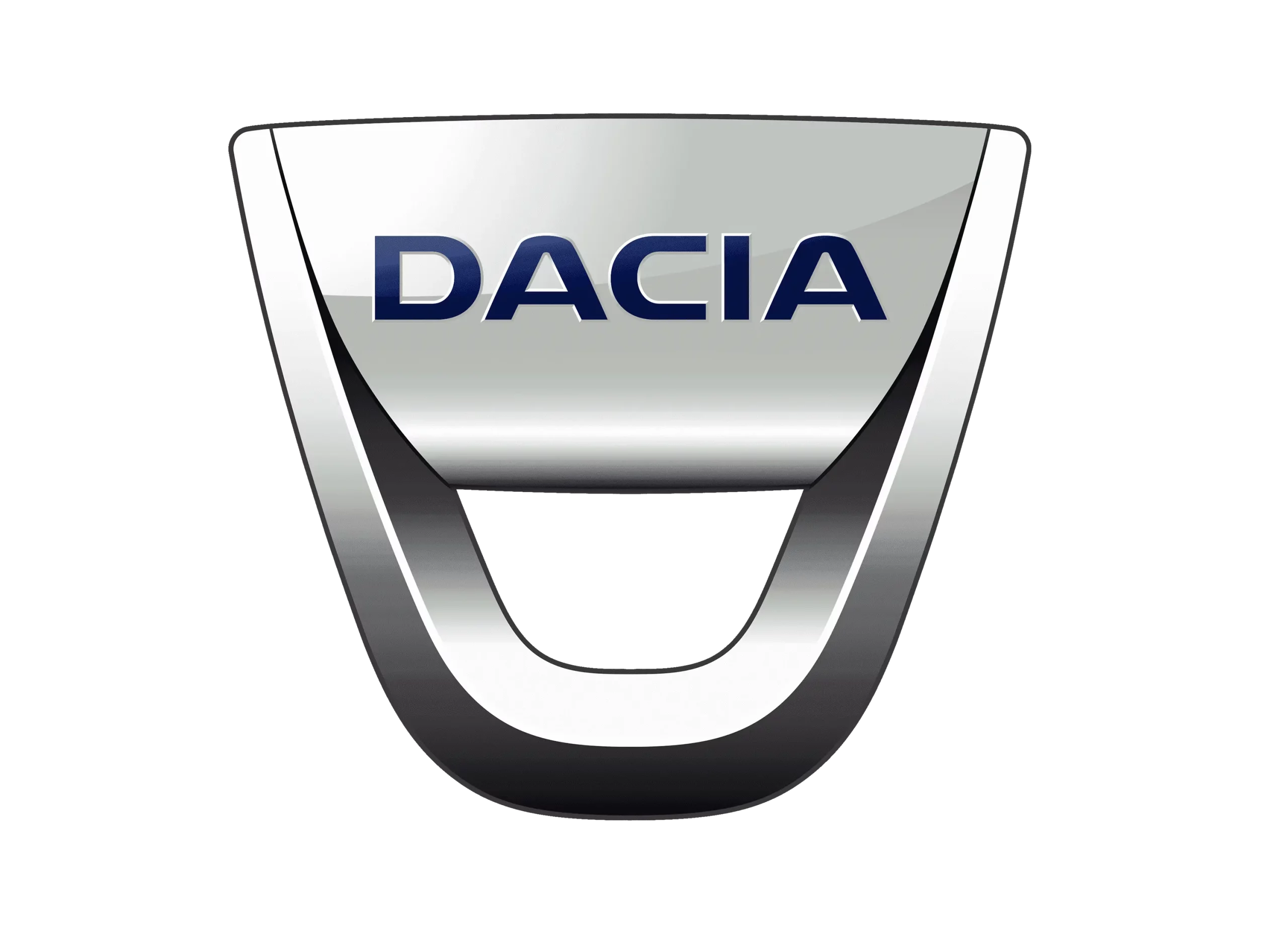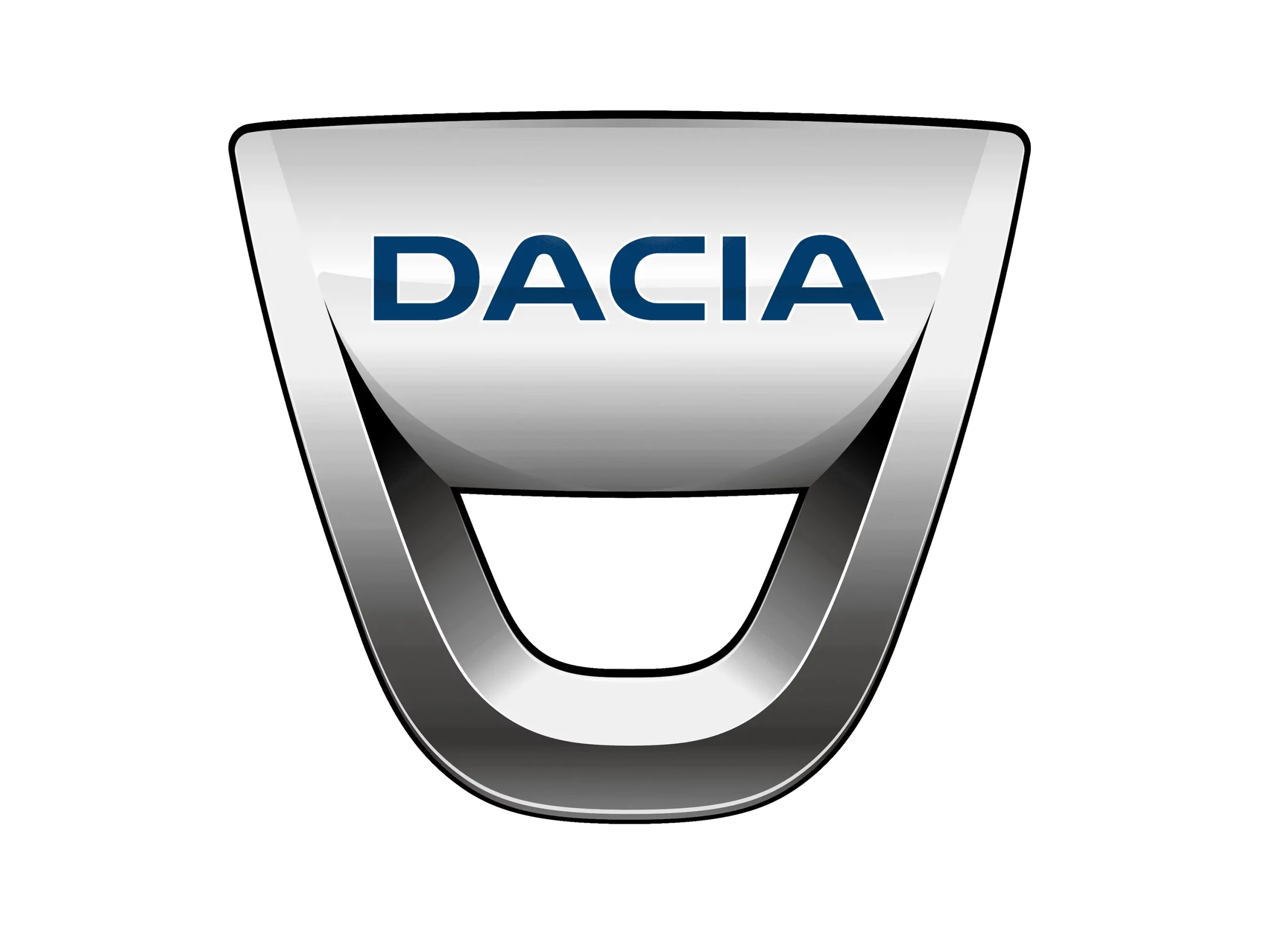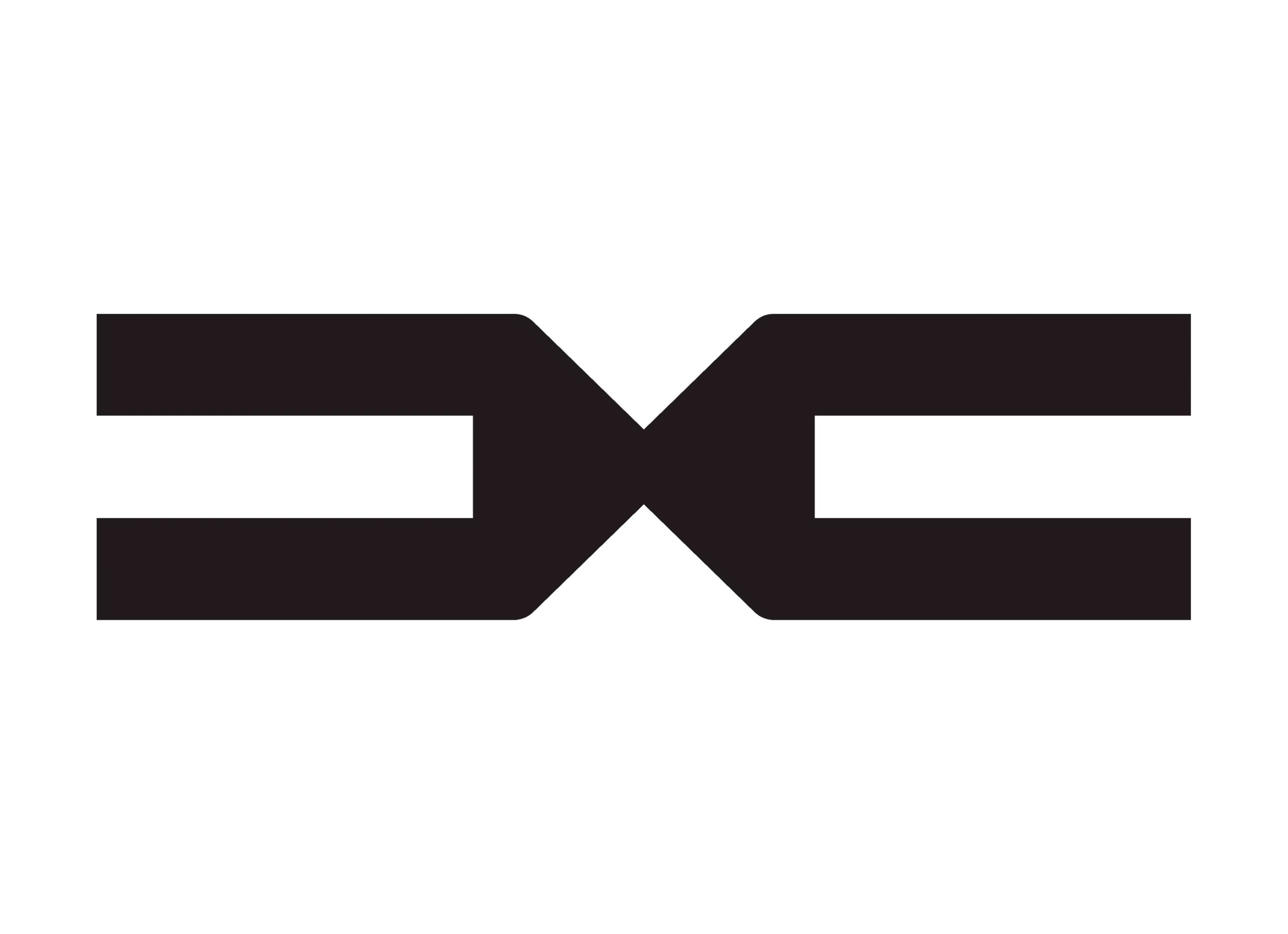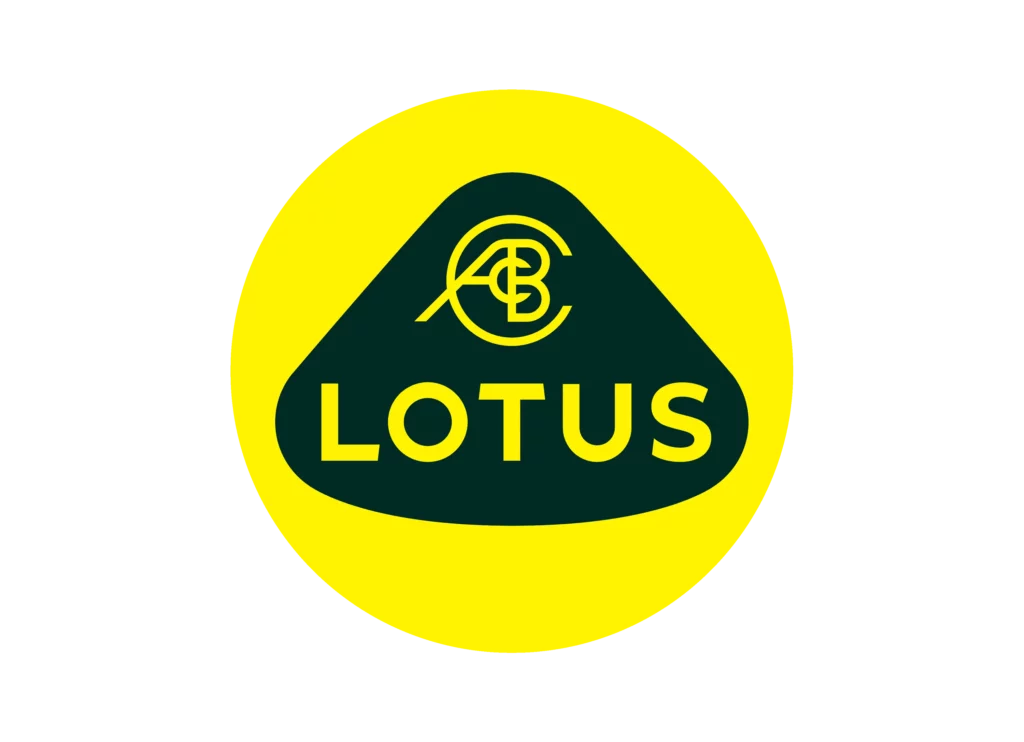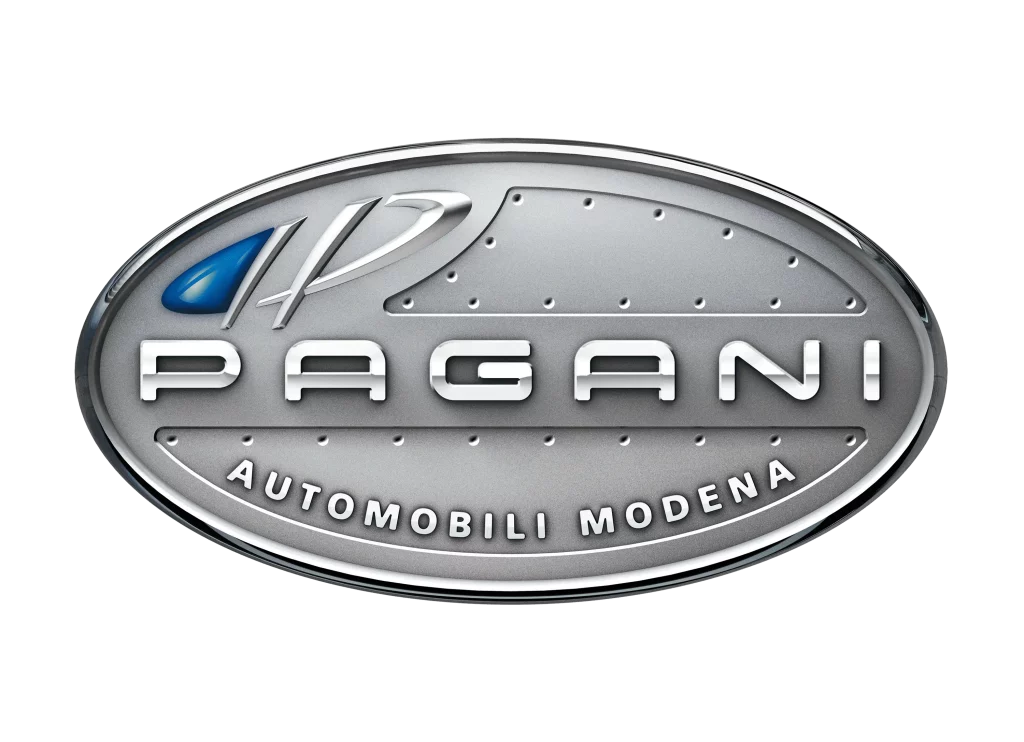Dacia logo

The evolution of the Dacia logo over the years reflects the company’s growth and evolution, as well as its connection to Romania and its national identity. The first logo, featuring a shield with the image of an eagle on mountain peaks, reflected the company’s origins as Uzina de Autoturisme Pitesti (UAP) and its location near the Carpathian Mountains. The eagle, a symbol of strength and freedom, also symbolized the company’s ambition and determination to succeed.
In the 1990s, as the company became part of the Renault Group, the logo was updated to reflect this new affiliation. The shield shape remained, but the eagle was replaced with a stylized “D” surrounded by a circle, with the Renault diamond symbol above it. This new logo reflected Dacia’s integration into the Renault family of brands and its commitment to quality and innovation.
The latest logo, which debuted on the Dacia Bigster concept car in 2021, takes a different approach. It features the letters “D” and “C” butted together, with the “D” lacking a left line and the “A” missing its inner bar. These letters are decorated with authentic Romanian symbols in an ancient geometric style, giving the logo a unique and distinctive look that reflects Dacia’s connection to its homeland and its cultural heritage.
Overall, the evolution of the Dacia logo over time reflects the company’s growth and evolution, as well as its connection to Romania and its national identity. From the eagle on the mountain peaks to the stylized “D” and Renault diamond, to the unique and authentic Romanian patterns on the latest logo, Dacia’s logo has always been a symbol of the company’s ambition, determination, and commitment to quality and innovation.
Dacia Brand Overview
1966
Established by the Romanian government, and they sold Dacia to the French car manufacturer Groupe Renault
Mioveni, Argeș, Romania
Dacia is a Romanian car brand that has made significant contributions to the national economy as the largest exporter and one of the most significant companies in the domestic market. It was founded in 1966 and was acquired by Groupe Renault in 1999. Dacia entered the Renault Dacia-Lada business group structure in 2021. The company is headquartered in Mioveni, Romania.
Dacia’s experience and technical production base stem from enterprises in the region that were opened during World War II, which were ordered by Marshal Ion Antonescu. The main plant was built in 1968, and the company began its operations by choosing the basic design of the Renault 12, which it had acquired. Before the full preparation of the industrial site and its equipment, Dacia focused on the Renault 8 model, which was released under the name Dacia 1100. The 1100S variant was intended for motorsport and police and had a powerful engine and twin headlights.
Today, Dacia offers a range of affordable cars that offer excellent value for money. Its product line includes models such as the Sandero, Duster, Logan, and Lodgy. These models have become popular in Europe and other markets for their reliability, durability, and affordability. Dacia has become a respected brand in the global automotive industry and continues to expand its reach into new markets.
Dacia History
Dacia is a Romanian car manufacturer that has made significant contributions to the national economy over the years. It is one of the largest exporters and most significant companies in the domestic market. In this blog post, we will explore the history of Dacia, its current product line, and its impact on the automotive industry.
History of Dacia
Dacia was founded in 1966, and after 33 years, it passed into the ownership of the French carmaker Groupe Renault. Since the beginning of 2021, the brand has entered the Renault Dacia-Lada business group structure. The company is headquartered in Mioveni, a town in Arges county, Romania.
Dacia has a long and storied history. The company’s origins can be traced back to the Uzina de Autoturisme Pitesti (UAP), which was opened during World War II by order of Marshal Ion Antonescu. Dacia was located near the village of Pitesti and was named after it. The main plant was built later in 1968 in Mioveni.
When Dacia began its operations, it chose the basic design of the Renault 12, which it had previously acquired. The company focused on the Renault 8 model before preparing the industrial site and its equipment. The Romanians released it under the name Dacia 1100, with a variant of the 1100S equipped with a powerful engine and twin headlights intended for motorsport and police.
Dacia has faced numerous challenges over the years. In the 1970s, the company struggled to keep up with the changing automotive landscape. However, it began to find success in the 1980s with models like the Dacia 1310, which was produced until 2004. In 1999, Dacia was acquired by Groupe Renault, and the company began to thrive once again.
Current Product Line
Dacia offers a range of affordable cars that offer excellent value for money. The brand is known for its reliability, durability, and affordability. Its product line includes models such as the Sandero, Duster, Logan, and Lodgy.
The Sandero is a popular model that has received numerous awards for its value and affordability. It is available in both hatchback and estate versions and comes with a range of engine options.
The Duster is a compact SUV that is available in both 4×2 and 4×4 versions. It is known for its off-road capabilities and has become a popular choice for those who want an affordable SUV.
The Logan is a sedan that is available in both petrol and diesel versions. It is known for its spacious cabin and comfortable ride.
The Lodgy is a family MPV that can seat up to seven passengers. It is available in both petrol and diesel versions and offers a spacious interior and a range of features.
Impact on the Automotive Industry
Dacia has become a respected brand in the global automotive industry. Its cars offer excellent value for money, making them popular in markets around the world. The company has also had an impact on the industry by pioneering the use of modern production techniques in the Romanian automotive sector.
In conclusion, Dacia is a car manufacturer with a long and storied history. The brand has faced numerous challenges over the years but has emerged as one of the largest exporters and most significant companies in the domestic market. Its current product line offers a range of affordable cars that offer excellent value for money. The brand has also had an impact on the automotive industry by pioneering the use of modern production techniques. Dacia continues to expand its reach into new markets and is a brand to watch in the coming years.

